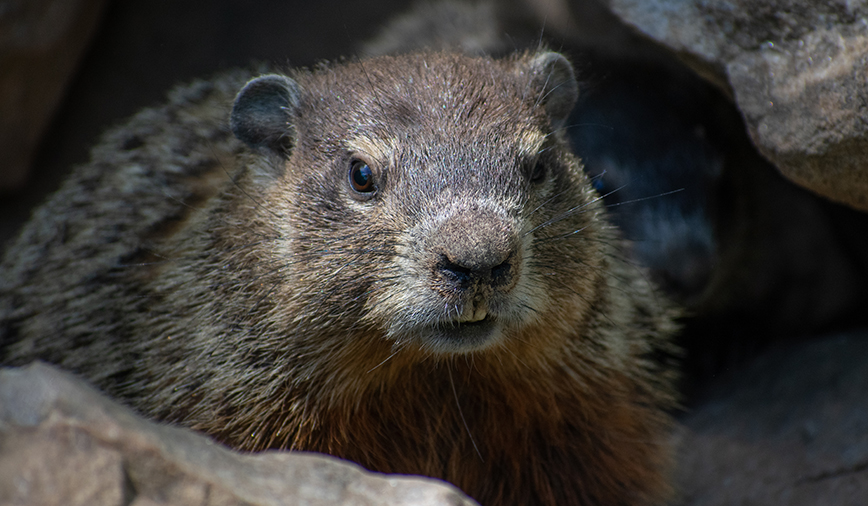The third in a series chronicling lesser known fall season phenomenon.
If today were February 2nd, the star of this week’s column would need little introduction. For well over a century—and even longer if you count the custom’s European roots–Groundhog Day events have given people a reason to celebrate the supposed prognosticating abilities of a pudgy rodent that has a thing about shadows.
(The day is also, near as I can tell, the only holiday that makes repeated and persistent use of the word prognosticate.)
But the rest of the year, Punxsutawney Phil (or Buckeye Chuck or Jimmy the Groundhog or any of the other famous prognosticators) go by a more mundane name—Marmota monax—and many of their activities center around the major physiological changes they undergo now, in the fall of the year.
Groundhogs, which are also known as woodchucks, are one of the relatively few mammals that enter a state of true hibernation. That is, their body temperature drops, their breathing slows and their heart rate plummets, and they live in a state of suspended animation, sometimes for months on end.
We humans tend to think of hibernation as period of deep sleep—the proverbial “long winter’s nap.” In our world, such slumber might also be accompanied by a glowing fire, snuggly blankets and maybe nightcap—the kind you wear or the kind you drink, or both.
But in the woodchuck’s world, conditions are anything but warm and cozy. Hunkered down in a burrow that extends below the frost line, a chubby ‘chuck’s body temperature drops from around 100F to 37F or so—a few degrees above freezing. Their respiration drops to one breath every few minutes. And their hearts slows down to about four beats per minute—one every 15 seconds. They may rouse from time to time to make a trip to the aptly named toilet chamber, but that’s about it for activity from November through March.
Survival over this long period depends on the amount of body fat—that chubbiness—a woodchuck is able to store prior to hibernation. This time of year, these guys are in full-on weight gain mode, eating as much as a pound of food a day in order to pack on a few extra ounces before that first really hard frost hits.
Now if you’re like me, you might be thinking how gaining a few ounces really doesn’t sound that difficult. (In fact, I’m pretty sure I’ve done exactly that since starting this column, thanks to a bag of M&Ms sitting just a little too close.)
However, woodchucks consume a diet that is almost 100% vegetable matter. Though low in fat, this intake is nonetheless used by the woodchuck to produce just that—the fat that will sustain it through the cold-weather months when plant material is in short supply.
My friend Nikki, a longtime fan of woodchucks and in fact all critters, has been lucky enough to observe these preparations over the last few weeks, thanks to the arrival of a new backyard resident. She related his story in a recent Facebook post: “I received a call a few weeks ago from a sweet lady who needed to relocate this woodchuck for his own safety. The woodchuck that had lived here before moved (yes, that’s the story I choose to believe) after the fox family moved in last year. With the necessary permits in place we relocated this fellow to his ready-made backyard den. Happily, he seems to be adjusting, and I get free lawn edging!”
Since that time, Nikki reports that Wally has settled into a routine of “eat, sleep and sit on the deck.” He’ll continue this daily agenda—one, I’ve gotta admit, I envy—until he plugs his burrow with soil and leaves and heads into hibernation.
Early next spring he’ll rouse, with 40% or more of that stored body fat used up. More will melt away during those first few wakeful weeks as he looks for two things: food, and a mate. I look forward to more updates from Nikki about Wally and his adventures in her wonderful, wildlife-friendly backyard—a place where every day is Groundhog Day.
Pam Otto is the manager of nature programs and interpretive services at the Hickory Knolls Discovery Center, a facility of the St. Charles Park District. She can be reached at 630-513-4346 or potto@stcparks.org.

